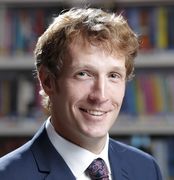Autism and the criminal justice system: Is there a deficit in our understanding? Marking Autism Acceptance Week
This week (28 March – 3 April) is Autism Acceptance Week, helping to raise awareness as to what autism is and how it affects Autistic people, promoting acceptance.
Autism is a lifelong developmental disability which affects how people communicate and interact with the world. One in 100 people are on the autism spectrum and there are around 700,000 autistic adults and children in the UK.
Autism is a spectrum condition and affects people in different ways. Like all people, autistic people have their own strengths and weaknesses. It can create challenges with communication, anxiety, social interaction, behaviour control and over-sensitivity to touch or light. It can be challenging to obtain a clear diagnosis.
There is growing recognition that autism and other brain conditions, including those caused by injury or by early traumas, may be increasing the contact those with such neuro-diversity or disabilities have with the criminal justice system.
This latest VRU Blog by our Education Lead Tom Goodenough, who is establishing a new VRU Special Interest Group to explore the issue:

One of our founding principles at the Thames Valley Violence Reduction Unit (TVVRU) is that we use a public health approach in our work reducing serious violence in our communities. A key pillar of the World Health Organisation’s definition of that public health approach is that it is imperative organisations really understand the scale and the impact of a problem before they can truly address it effectively.
Following the establishment of our Special Interest Group on Neurodiversity & Neurodisability, it has become increasingly clear that there is a real deficit across many parts of our society when it comes to understanding the challenges some people experience living with a neurodiverse condition such as autism, ADHD or social and emotional health needs.
Indeed, whilst the research is becoming increasingly clear and pointing to neurodiversity being one of the biggest disparities in our criminal justice system, the accompanying knowledge of how to diagnose and what to do about such disparity is, at best, underdeveloped in most organisations.
Of course, as is so often the case, the young people most negatively impacted (and those most likely to come into contact with criminal justice) are also victims of other adversity earlier on in their life course. Children with a genetic risk of neurodivergent traits and an experience of childhood trauma are six times more likely to have three or more neurodivergent conditions (Dinkler et al., 2017).
There is good evidence of this ‘co-concurrence’ of conditions and a link to other adversity but, despite this, we often see children with only a single diagnosis (Cleaton and Kirby, 2018) that is usually linked to the specialist they see, and inadequate support for their other areas of need.
The result of these challenges so early in a person’s life is often, inevitably, a difficult time at school and resulting impediments to their future success in many cases. One study, for example, identifies that children with autism were twenty times more likely than the national average to be excluded (Barnard et al., 2000).
So, the challenge that faces us all is two-fold: raising awareness and then acting to bring about the necessary improvements across society’s institutions. Our view at the Thames Valley VRU is that both aims are best met through a ‘whole systems’ approach.
For this reason, our Special Interest Group brings together partners from academia, health, education, policing and social care with the aim of raising awareness across the ‘system’, sharing our differing experiences and bringing about opportunities for practical collaboration on best practice approaches.
The ultimate aim is that working with these partners helps us to understand how best to operate across the system to implement a ‘whole child’ approach. Such an approach involves helping our institutions understand neurodiversity and, in turn, how to build protective and positive factors into young peoples’ lives. Equally, this approach requires the breadth of experience across these partners to help in establishing a thorough understanding of how context (predisposition, challenges in home life and community factors) can be a help or a hindrance to that young person.
It is clear there is much to do and events such as Autism Awareness Week are a vital part of helping both individuals and organisations to understand autism, as well as the breadth of neurodiverse conditions which, with an estimated one in six of us affected, have a profound – if currently understated – impact on our society.
If you would like to find out more about our Special Interest Group on Neurodiversity/Neurodisability, please get in touch at vru@thamesvalley.police.uk
You can learn more about autism and access a range of guidance and resources on the National Autistic Society website.
References
Dinkler, L., Lundström, S., Gajwani, R., Lichtenstein, P., Gillberg, C. and Minnis, H. (2017). ‘Maltreatment‐associated neurodevelopmental disorders: a co‐twin control analysis’, Journal of Child Psychology and Psychiatry, 58(6), pp. 691-701.
Cleaton, M.A.M. and Kirby, A. (2018). ‘Why Do We Find it so Hard to Calculate the Burden of Neurodevelopmental Disorders?’, Journal of Child Developmental Disorders, 4:10.
Barnard, J., Prior, A. and Potter, D. (2000). Inclusion and autism: is it working?
Available at: https://laset.webs.com/documents/inclusion%20and%20autism.pdf